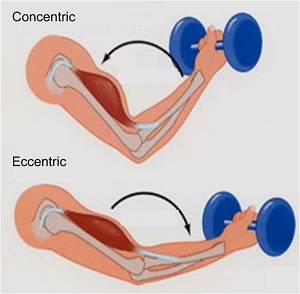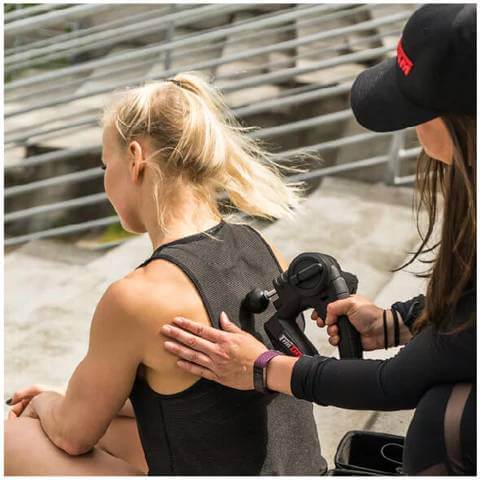After upping weights, going that extra mile, or starting a new fitness class, you’re guaranteed to be sore. Being sore after a tough workout is a necessary evil that most athletes wear with pride, but there’s no denying the sublime feeling of taking the stairs after leg day or the first day of preseason. At TimTam, we know that these aches and pains can hold you back from performing your best day in and day out, which is why we’ve created a line of recovery tools designed to turn down the post-workout pain so you can continue reaching your goals. But why exactly are you so sore after a workout, and what can you do to heal faster? The experts at TimTam are here to break it down for you.
Why Am I Sore After Working Out?
Throw Your Misconceptions About Lactic Acid Buildup Away

Image Source: https://www.quora.com/After-a-first-day-at-the-gym-should-I-wait-until-the-soreness-passes-before-I-go-back
We’ve all heard it: lactic acid buildup is the source of your post-workout soreness. The truth? While lactic acid does exist, it’s not the entire source of your aches and pains. When you exercise, your body breaks down molecules (the nutrients you eat and that your body naturally creates) to create energy. During this metabolic process, your cells naturally become more acidic, which is what causes the initial ‘burn’ of a workout. Simultaneously, your body creates lactate as a byproduct of this metabolic process. This lactate is designed to slow down the rate that your cells become acidic -- meaning the lactate we refer to as the source of our pain is actually designed to help us!
Our bodies are always creating lactate, even when we are staying still. Here’s the kicker though: lactate clears the body naturally in about 30 minutes to an hour after working out. So when you’re still sore the next day or two, what’s actually the source of your pain?
The true source of your post-workout pain is DOMS, or delayed onset muscle soreness. DOMS is the result of microtears (sometimes known as microtraumas) in the muscles that cause inflammation. These microtears occur primarily from eccentric muscle contraction - as opposed to concentric muscle contraction - in which we lengthen muscles while under a load of weight. Think of eccentric muscle contraction like this: when you’re doing a bicep curl, curling upwards (concentric muscle contraction) causes your muscle to shrink. When you reextend (eccentric muscle contraction), your muscle extends like a rope that is being stretched. The rope will begin to fray and have several pieces come loose and tear. These frayed pieces are the microtears that occur when your muscle is extended under weight.
These microtears are what allow your muscles to grow and strengthen. Much like when you get a blister and callus forms, your muscles must break before they can become stronger. There’s a fine balance that occurs here because while soreness is not a good indication of growth, soreness is necessary to become stronger.
Preventing and Decreasing Post-Workout Muscle Soreness
How Paying Attention to Recovery is Key to Staying Limber

While pain and soreness are a necessary evil for someone looking to gain muscle, it’s important to approach DOMS head-on with tools that allow you to speed up your recovery and get back to training.
The first tool for preventing and decreasing is, as you’ve guessed, is a proper diet. Your diet is key in making sure that your body not only has the proper nutrients to expel during exercise for energy, but the proper building blocks to heal and rebuild your microtears. Eating nutrient-dense whole grains, lean proteins, and plenty of vegetables is key to helping your perform and recover well.
A less-commonly considered aspect of healthy recovery is a massage. Sports massages are designed to stimulate blood circulation to the aching muscles. This newly oxygenated blood brings the nutrients you need to heal microtears directly to your muscles, speeding up your recovery and decreasing the soreness you feel after a workout.
Your pain is also partially caused by inflammation that releases cytokines: cellular secretions that affect other cells in your bodies. Massage helps break down these cytokines and decrease inflammation, leading to a more refreshed feeling in your muscles.
But here’s the problem: sports massages can run around $100 an hour, and you don’t have the time to head to a masseuse after each and every workout. Your perfect solution? The TimTam Power Massager. This handheld personal massager delivers 2500 powerful percussive strokes to targetted muscle areas per minute, allowing you to speed up recovery and boost your performance after each and every workout by healing these microtears. Best of all -- the TimTam Power Massager pays itself off in less than a week’s worth of recovery massage.
Looking to decrease your post-workout soreness and tackle DOMS head-on? Learn more about TimTam’s powerful line of recovery tools and the Power Massager: the answer to every athlete’s post-workout soreness.


